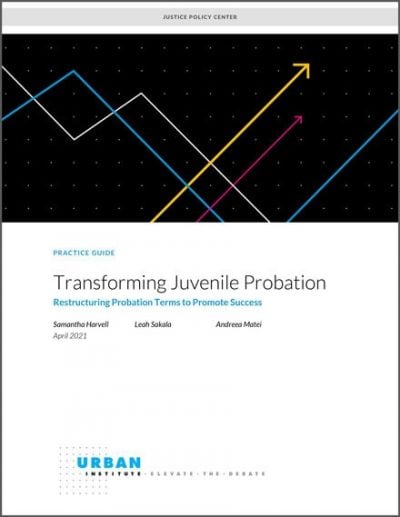Summary
This guide outlines a new way of thinking about juvenile probation term lengths and termination processes and provides research-informed guidance for term structure to promote youth success. Probation terms should be only as long as is necessary to connect youth with any needed supports and services in their communities and should be designed to minimize disruption to young people’s lives and development.
This approach asserts that the vast majority of youth probation terms can be completed in six months or less. In the long run, probation agencies should be working to bolster and reinforce community capacity to meet the needs of youth and their caregivers, and to promote public safety without relying on the juvenile justice system and its associated risks for youth.
THREE REASONS TO LIMIT JUVENILE PROBATION TERMS
- Minimize harm to youth. Juvenile probation can impose onerous requirements on youth and families, subject youth to harmful biases, and lead to deeper entrenchment in the juvenile justice system.
- Use limited resources inside and outside the justice system efficiently. Reducing probation caseloads by shortening terms creates time for probation officers to forge stronger connections with community-based service providers and frees up resources that can reinforce community capacity outside the justice system.
- Advance racial equity. Prioritizing youth access to the community-based supports and services they need can minimize the likelihood of justice system entrenchment for youth of color.
A FRAMEWORK FOR TIME-LIMITED, COMMUNITY-CENTERED PROBATION
In this approach, the probation officer provides a time-limited bridge toward longer-term, community-based solutions rather than being the change agent or solution for the youth. This has important implications for the length of probation terms. When the primary aim of probation is to link youth with community resources to support healthy development, longer terms are not necessary because the goal is not to fully address the youth’s needs or achieve rehabilitation goals during the probation term. Rather, the goal is to work together to map the supports and resources that can help them move forward.
The framework is structured around three phases. With the appropriate structures and supports, the vast majority of youth can accomplish all three phases in six months or less, and much faster in many cases. Tracking data on term length disaggregated by race and ethnicity is key to measuring implementation progress.



